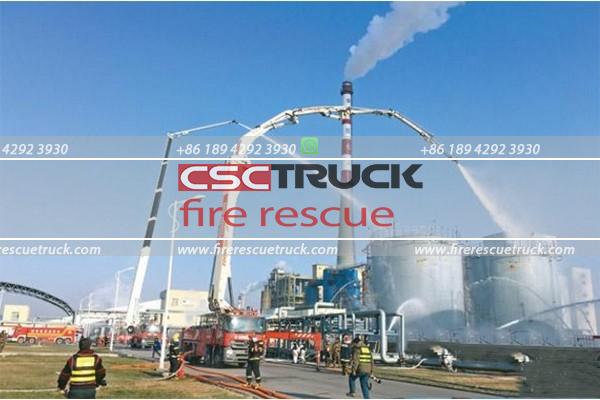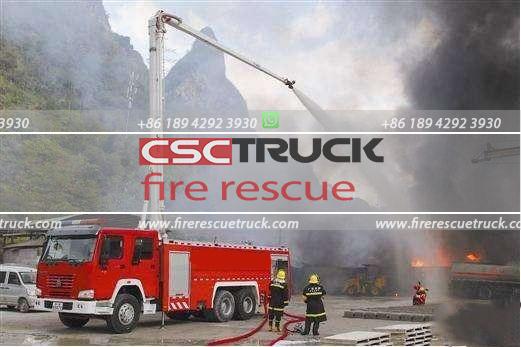What Color Code is Fire?
Fire is one of the most fascinating natural phenomena. It has been a crucial element in human civilization, serving as a source of heat, light, and cooking since the dawn of time. However, when discussing the visual aspect of fire, the conversation often drifts towards its color. Whether it’s a blazing orange, a deep red, or a ghostly blue, fire’s colors can tell a story about its temperature, composition, and even its application in safety systems. But what exactly is the color code for fire, and how do these different hues come into existence?
The Science Behind Fire’s Color
To understand the color of fire, we need to delve into the science of combustion and light. Fire is the result of a chemical reaction known as combustion, which occurs when fuel reacts with oxygen in the presence of heat, releasing energy in the form of light and heat. This energy release manifests itself as flames, and the specific color of these flames depends on several factors:
1. Temperature of the Fire:
The temperature of a fire plays a significant role in its color. As the temperature increases, the energy levels of the particles in the flame rise, causing them to emit different wavelengths of light. Cooler flames often appear red or orange, while hotter flames may be yellow, white, or even blue. This principle is similar to how a blacksmith can judge the heat of metal by its glowing color.
2. Chemical Composition:
The presence of specific elements in the burning material can also alter the color of the fire. For example, burning copper produces a green flame, while sodium results in a bright yellow flame. These colors occur because different elements emit distinct wavelengths of light when they are excited.
3. Fuel Type:
The type of fuel used can impact the flame color as well. Wood, paper, and natural materials tend to produce yellow or orange flames due to the presence of carbon, while gases like propane and butane can burn with blue flames.
4. Oxygen Supply:
The availability of oxygen is a critical factor in determining flame color. A limited oxygen supply can cause incomplete combustion, leading to a cooler, redder flame. In contrast, an abundant supply of oxygen leads to complete combustion, resulting in a hotter and often bluer flame.
Understanding these principles helps us decipher why fire appears in different colors. But when we ask the question, “What is the color code of fire?” it’s essential to consider both scientific and practical viewpoints.

Fire Color in Safety Systems
From a safety perspective, fire is universally associated with danger, which is why its color has become a significant symbol in safety protocols, emergency systems, and design standards.
In safety and industrial design, the term “color code” typically refers to a standard set of colors used to represent different hazards or functions. For example, fire extinguishers, fire trucks, and emergency signs often adhere to a specific color code to ensure consistency and easy recognition. The most common colors associated with fire safety include:
1. Red:
Red is the traditional color used to indicate fire hazards and emergency equipment. Fire alarms, fire extinguishers, and fire truck apparatus are often painted red because it’s a highly visible color that evokes urgency and caution. In safety codes and standards, such as the Occupational Safety and Health Administration (OSHA) and the National Fire Protection Association (NFPA) in the United States, red is the designated color for indicating fire safety equipment.
2. Yellow or Amber:
Yellow or amber colors are sometimes used to indicate caution around potential fire hazards or areas where flammable materials are stored. These colors are often applied to warning signs and labels to signify a need for awareness and precaution.
3. Blue and Green:
While not typically used to denote fire itself, blue and green colors can appear in safety color codes to signify the status of fire suppression systems (e.g., water supply indicators for sprinklers) or to denote safety equipment that is not directly related to firefighting but is used in conjunction with fire safety, such as first-aid kits or emergency exit routes.
In these systems, the “color code of fire” typically means the symbolic color that represents fire and fire-related equipment, which is predominantly red.
Fire Color in Digital Media and Design
When it comes to digital design and web development, color codes refer to hexadecimal values, RGB (Red, Green, Blue) compositions, or other notations used to create specific colors on screens. Designers often face the challenge of representing fire accurately in digital formats, as fire is not a single color but rather a gradient of multiple hues.
The color code most commonly associated with fire is usually a shade of red or orange. For example:
– Hexadecimal Code: `#FF4500` (Orange-Red), `#FF5733` (Flame Orange), or `#FF0000` (Bright Red)
– RGB: (255, 69, 0) for Orange-Red or (255, 87, 51) for Flame Orange.
– CMYK: (0, 0.73, 1, 0) for Flame Orange.
These color codes can vary depending on the specific shade of fire being represented. In video games, animations, and graphic design, different gradients of these colors are often used to simulate the dynamic nature of fire, with yellow and white used to depict the hottest parts of the flame and red or orange for the cooler outer edges.

Practical Applications and Symbolism
Understanding the color code of fire has practical applications beyond safety systems and digital design. In the world of pyrotechnics, the precise control of flame color is used for visual effects in fireworks and stage productions. Here, chemists use specific compounds to produce the desired color effects, such as strontium for red, barium for green, and copper for blue.
Moreover, the symbolism of fire’s color extends into cultural and psychological realms. Red, the primary color associated with fire, is often linked to emotions such as passion, energy, and aggression. In contrast, blue flames, which signify a higher temperature, are often perceived as calm and stable, despite their underlying intensity.
Conclusion
The “color code of fire” is not a straightforward concept with a single answer. Scientifically, it involves the interplay of temperature, chemical composition, and oxygen levels, resulting in a wide range of possible hues from red to blue. Practically, fire safety systems use red as the standard color to signify fire and fire-related equipment. In digital media, color codes like `#FF4500` or RGB values such as (255, 69, 0) are used to depict fire visually.
Whether for safety, design, or scientific understanding, the color of fire is a powerful and complex subject that intertwines with multiple fields, making it much more than just a visual phenomenon. Understanding its various aspects helps us appreciate the subtleties of fire’s beauty and the importance of color coding in both practical and symbolic contexts.







